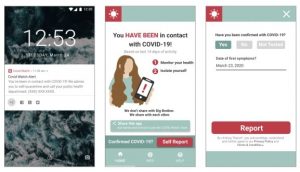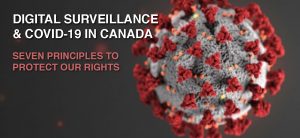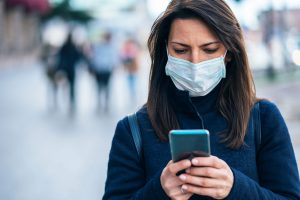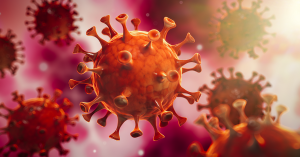Can contact tracing actually help stop the spread of the virus that causes COVID-19?
Yes.
Can technology-assisted contact tracing, or TACT, help?
Some governments, certain tech companies, even some committed privacy activists think so. We need the most clever ideas and the most sophisticated tools to win the fight against this deadly contagion, they say, and sensor-equipped mobile technologies offer a great way to track and trace people who are ill, infected, or exposed.
We’ve been using tech to track and trace people for years, so the current pandemic makes that capability much more attractive to some, and for some good reasons.

Developers of the Covid Watch app say it lets users protect their communities from COVID-19 without sacrificing their personal privacy.
But there are also very good reasons to proceed with great caution. The development of a technology-assisted contact tracing application must proceed with tact, the ability to sensitively deal with difficult issues.
Issues like universality and accessibility. Privacy and security. Efficiency and effectiveness. Cost and timeliness. Trust and consent. Life and death.
Around the world and here in Canada, many tech companies are set to deliver the best contact tracing or notification platform as quickly as possible. Almost every provincial government, in addition to a wide-ranging RFP (request for proposals) from the feds, is calling for the creation of technology-assisted contact tracing solutions.
(The possible patchwork nature of multiple initiatives is only another cause for caution: the Canadian Civil Liberties Association has sent a letter to the Prime Minister and all 13 provincial and territorial premiers, warning that development of tracing programs be closely overseen by their individual privacy commissioners. Even so, that may result in a dozen or more different platforms with different efficiency rates and different privacy risks.)
Contact Testing is Time-Tested
Contact tracing is a tested, proven medical procedure; it’s been used in the fight against TB, Ebola, AIDS, and now the 2019 novel coronavirus. Identifying the human contacts that people with a disease have had is a crucial treatment in stopping the spread of that disease.
But like any medical technique, it requires trained practitioners to execute properly. Like any medical technique, it is just one part of an overall treatment strategy.
Contract tracing is at its core a labour-intensive activity, to be sure. And yes, technology is often used to reduce labour requirements. But contact tracing takes real people skills, according to many medical practitioners. It’s about people talking to people. Gaining their trust, helping them honestly remember recent activities. Providing crisis counselling, if needed, or referral to other medical treatment agencies can be a big part of the relationship-building so crucial to successful contact tracing procedures.
But contact tracing will still not work on its own.
Experienced epidemiologists say contact tracing is like one of the four legs of a table – remove just one and the table collapses.
Testing is a key support in the fight against disease spread. Testing each and every identified exposed person, each and every contact identified. And of course, testing must be reliable, regular, and wide-spread if the contagion is to be stopped. That seems a long way away.
And because the coronavirus may be spread by human contact, and even with those who carry the virus but do not exhibit symptoms, we’ve been distancing ourselves physically and socially (that’s quarantine, and we’ve been calling it self-isolation as well). People who have been diagnosed as positive or are exhibiting related symptoms are being isolated, of course.
Testing, tracing, isolating, quarantining. Four legs of a table. Four corners of a containment box.
Clearly, when trying to stop a deadly global contagion, contacting as many people as possible who may be contagious seems like a good idea.
But (you might be surprised to know) putting a contact tracing app on a smartphone leaves out a lot of folks: projections said that last year would be the year that the global smartphone penetration rate passed 40 per cent for the first time.
Not too tactful to leave out 60 per cent of the people if you are fighting a pandemic.
Even here at home, as ubiquitous as smartphones seem to be, some 14 per cent of Canadian households do not own one. That’s a lot of Canadians to leave out of the equation. And the technical requirements of some tracing apps mean that the phone itself must be up-to-date; that may be a financial obstacle for some (perhaps 15 per cent of the phones out there are said not to be compatible with the latest tracing app requirements).
Demographers will add that economic and regional differences accentuate the gap: Atlantic Canada for example, has a smartphone penetration rate far lower than the rest of the country. Certain areas of the country just are not served well by cellular or wireless signals, such as rural regions and Indigenous communities. They cannot be left out of a serious contagion-fighting, contact tracing protocol.
Tactfully Raising Privacy and Security Issues
Because some technologies have already been used to track people (without their knowledge, and not to stop disease) technology-assisted contact tracing raises many privacy and security issues.
Trying to be as tactful as possible in the situation, Canada’s Office of the Privacy Commissioner has launched a framework it wants used to assess any new initiatives that impact our privacy amid the COVID-19 pandemic.
“During a public health crisis, privacy laws and other protections still apply,” the Office reminded, adding that “the principles of necessity and proportionality” should be applied.
Of course, it’s good that privacy laws still apply.
Yet private data has added value in times of a public health crisis. The information collected (and used) during tracking and tracing activities can help improve health care outcomes; enhance proactive protective measures to combat a contagion; identify physical areas of current or potential concerns; and help determine when it’s safe to reopen businesses, schools, and other public spaces.
The data that’s collected as part of a contact tracing program should be de-identified whenever possible (but eventually, of course, contact tracing tools must identify those who are at risk so they can be tested, treated, or isolated) and not used for other non-medical reasons.
Further, the impacts of data collection on vulnerable or disenfranchised people should be monitored. For instance, some algorithmic decision-making or AI has already been shown to contain biases that can create disproportionate impacts.
The Commissioner’s Office says any privacy-invasive measures should be time-limited, with obligations to end when they are no longer required. Collected data should be destroyed when the crisis ends.
And while oversight and accountability are very important, whether the Privacy Commissioner will be empowered with stronger laws and enforcement capabilities remains to be seen. He’s been waiting for some time for enforcement powers, COVID or no, and it seems more important than ever to ensure strong privacy mechanisms with effective remedies for people whose rights have been violated, including a robust inspection regime that gauges whether organizations are demonstrably accountable for their data privacy practices, and legal empowerment for his office so it can hit companies with big penalties for non-compliance with privacy and data protection laws.
But the need to deal tactfully with difficult issues like these is not holding back the marketplace. As mentioned, development initiatives are underway across the country, and around the world. Companies large and small are developing contact tracing solutions, and partnerships like the one between Apple and Google are pushing for TACT (although it may be easier said than done). Moving a bit more cautiously, Microsoft has issued a position paper on privacy and contact tracing.
Canada Contributes to Coronavirus Tracing Efforts
In Canada, among the many smaller firms working on contact tracing solutions are companies like Toronto-based EQ Works, which reports it has been working “incredibly hard” to help find a solution. The company has released a whitepaper describing its work with geospatial data and analytics and how such experiences may help move us towards “a new normal.”
LivNao Technologies has launched an app that uses both Bluetooth- and GPS-enabled technology to track confirmed COVID cases and any contacts they may have. The company also says its app can go back in time, identifying contacts made prior to a user getting the app. LivNao has offices in B.C. and the U.S., and that represents yet another complication in the battle against a global outbreak – jurisdictional differences in privacy laws, reporting requirements, legislative remedies, and enforcement capabilities open the door to inconsistent tracing, tracking, and treatment of COVID-19.
Meanwhile, in Montreal development is underway of a peer-to-peer COVID-19 tracing app that utilizes artificial intelligence.
The project is going at full speed at MILA, an AI research and development organization, where two dozen technicians armed with machine learning tools hope to be able to predict a person’s probability of having the disease based on contact history and medical information. The project is said to have a strong focus on privacy, relying to some degree on open-source development efforts going on worldwide.
And the Ontario government has its own project to develop a new health data platform as part of its response to the COVID-19 pandemic. It’s called the Pandemic Threat Response (PANTHR) platform, and when launched, it will provide researchers with access to de-identified, integrated provincial-wide health data on a secure platform that’s also powered by artificial intelligence.
Extraordinary Times, Extraordinary Sacrifices
These are just a few of the technology-assisted contact tracing initiatives underway around the world. We are living in extraordinary times, and the pressure to take extraordinary steps to address the crisis is understandable. But we should not be making extraordinary sacrifices when we consider personal privacy, social values, and human rights.
That’s why a group of privacy experts and civil society advocates around the world (including here in Canada) have joined with the International Civil Liberties Monitoring Group to put forward a set of principles for protecting the rights and privacy of people during the fight against COVID-19.

The International Civil Liberties Monitoring Group released a set of principles for protecting the rights and privacy of people during the fight against COVID-19.
The principles call for caution and restraint in any rollout of new emergency measures, such as data collection or location tracking to monitor the spread of the virus or enforce quarantines.
Governments are urged to prioritize other measures to keep people safe and in their homes first and to favour voluntary data sharing solutions over any non-voluntary data collection.
“Canada is facing an unprecedented health crisis that requires unprecedented action to flatten the curve and stop the spread of COVID-19,” said Tim McSorley, National Coordinator at the International Civil Liberties Monitoring Group. “In their pursuit of this important goal, we urge Canadian officials at all levels to use restraint around surveillance activities that infringe on our most fundamental rights, including privacy, freedom of assembly, and freedom of movement.
“Any powers must explicitly contain time-limits and public oversight, and it is crucial that any health-related surveillance be kept separate from law enforcement and intelligence activities.”
McSorley’s statement encapsulates a set of guiding principles that the signatories strongly urge Canadian governments to follow when considering any kind of enhanced digital surveillance, data collection, or technologically-assisted contract tracing platform in the battle stop COVID-19.
They urge strongly, but tactfully.
# # #
-30-
WhatsYourTech.ca has more COVID-19 related technology articles you can read; please visit our new dedicated articles listing page.






I hope one day technology will be able to ensure our health